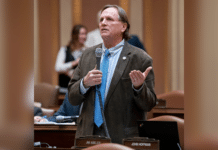Governor Tim Walz has already begun backtracking on his “One Minnesota” theme by announcing Tuesday morning that his administration will continue an appeal of the Line 3 oil pipeline replacement project begun by his predecessor, Governor Mark Dayton. The decision occurred despite the fact the Minnesota Public Utilities Commission (PUC) unanimously approved the replacement of the aging oil pipeline.
By appealing the pipeline replacement project, Governor Walz has missed a layup that would have been a win for the environment, a win for the economy, and a win for public safety.
In his statement announcing his decision, the Governor stated “When it comes to any project that impacts our environment and our economy, we must follow the process, the law, and the science.” But more than anything, this move demonstrates that Walz will be more-than-willing to use the phrase “follow the science” as a dubious excuse to throw roadblocks in front of projects that are unpopular with his environmental base.
For example, how is delaying the replacement an aging oil pipeline that is currently operating at half of its capacity due to safety concerns “following the science?” How is it protecting the environment? It isn’t.
Furthermore, pretending we will not need oil in the future, as the Commerce Department argued under Governor Dayton, is simply inexcusable. The graph below from the Energy Information Administration shows oil is the single-largest source of energy used in Minnesota. This isn’t surprising, because for every 1,000 people living in Minnesota, 870 of them own cars. According to Governing magazine, 83 percent of households in Minneapolis, 86.5 percent of households in St. Paul, and 91 percent of Rochester households own at least one car.

Additionally, oil is used for home heating is many parts of the state, and diesel fuel literally runs our economy, from powering tractors on farms to fueling the semis that make sure grocery stores have fresh produce and that Target is adequately supplied with toilet paper. Diesel is also critical to healthcare because it powers ambulances and it is also burned in generators to provide life-saving backup power to hospitals in the event of an electricity outage.
Relying on expensive electric cars, buses, ambulances, firetrucks, and semis, whose batteries would lose 40 percent of their charge at 20 degrees above zero in Minnesota is a recipe for disaster.
Water is life, but so is oil.
The second-most used source of energy is natural gas, which is also moved by pipelines.
This move should also worry proponents of copper-nickel mining in Minnesota because, here too, Walz said he would “follow the science.” Maybe he will, the science says mining can, and is, being done responsibly, but the move to continue to stall Line 3, along with his appointment of Sarah Strommen as the new commissioner of the Minnesota Department of Natural Resources, who has held high ranking positions at groups such as Friends of the Boundary Waters Canoe Area, a group that opposes copper-nickel mining and wants to stop the PolyMet mine, does not instill confidence that “following the science” is anything other than code for “block projects and appeal to my environmentalist base.”
Approving Line 3 was a perfect opportunity for Governor Walz to show he was serious about his “One Minnesota” message. Unfortunately, he missed the layup.












